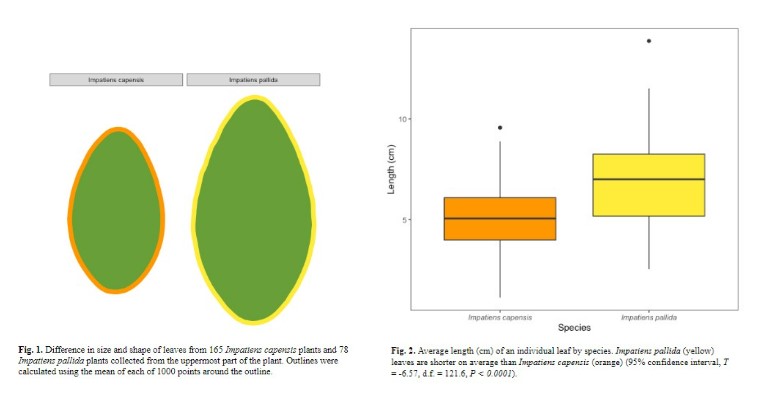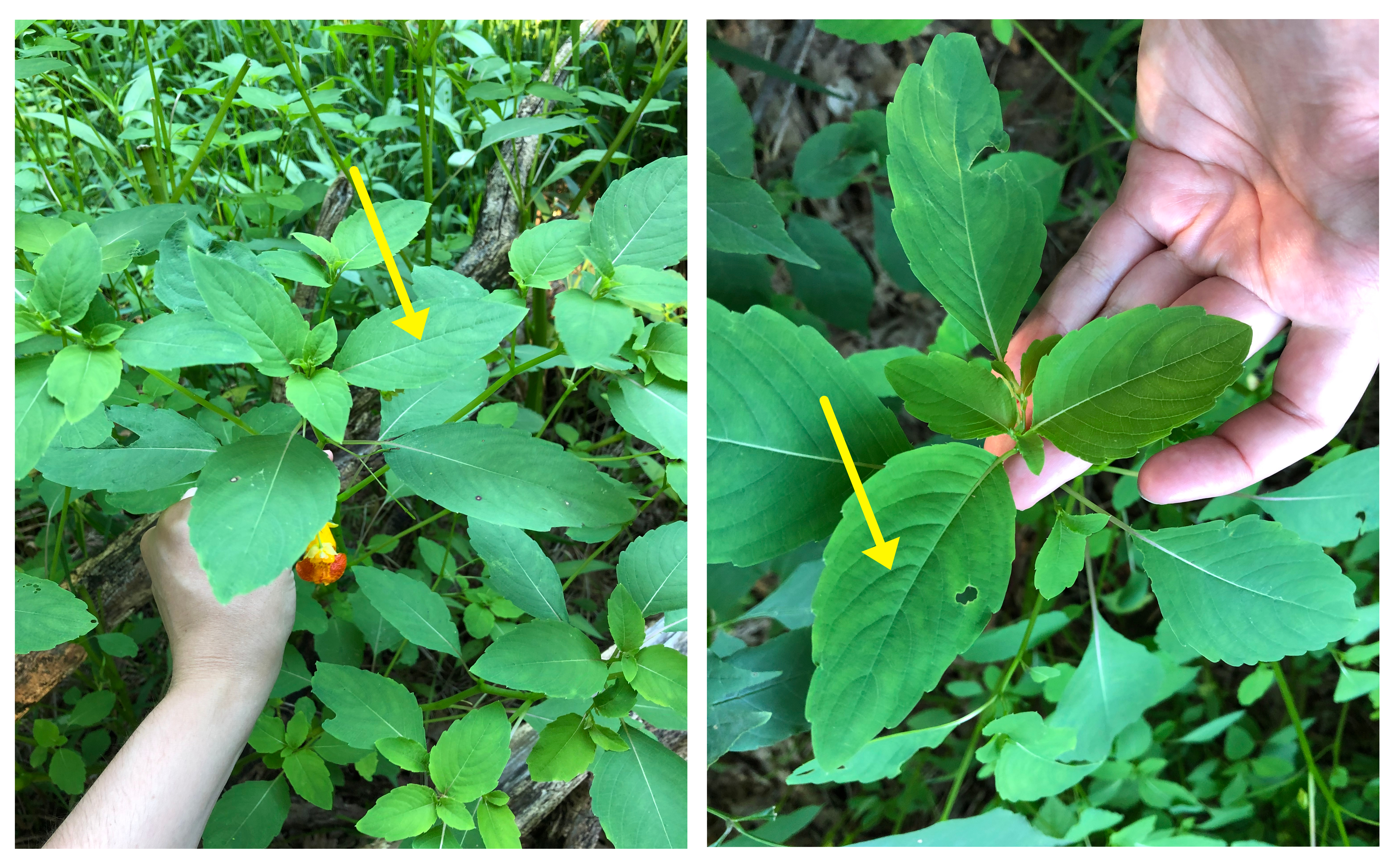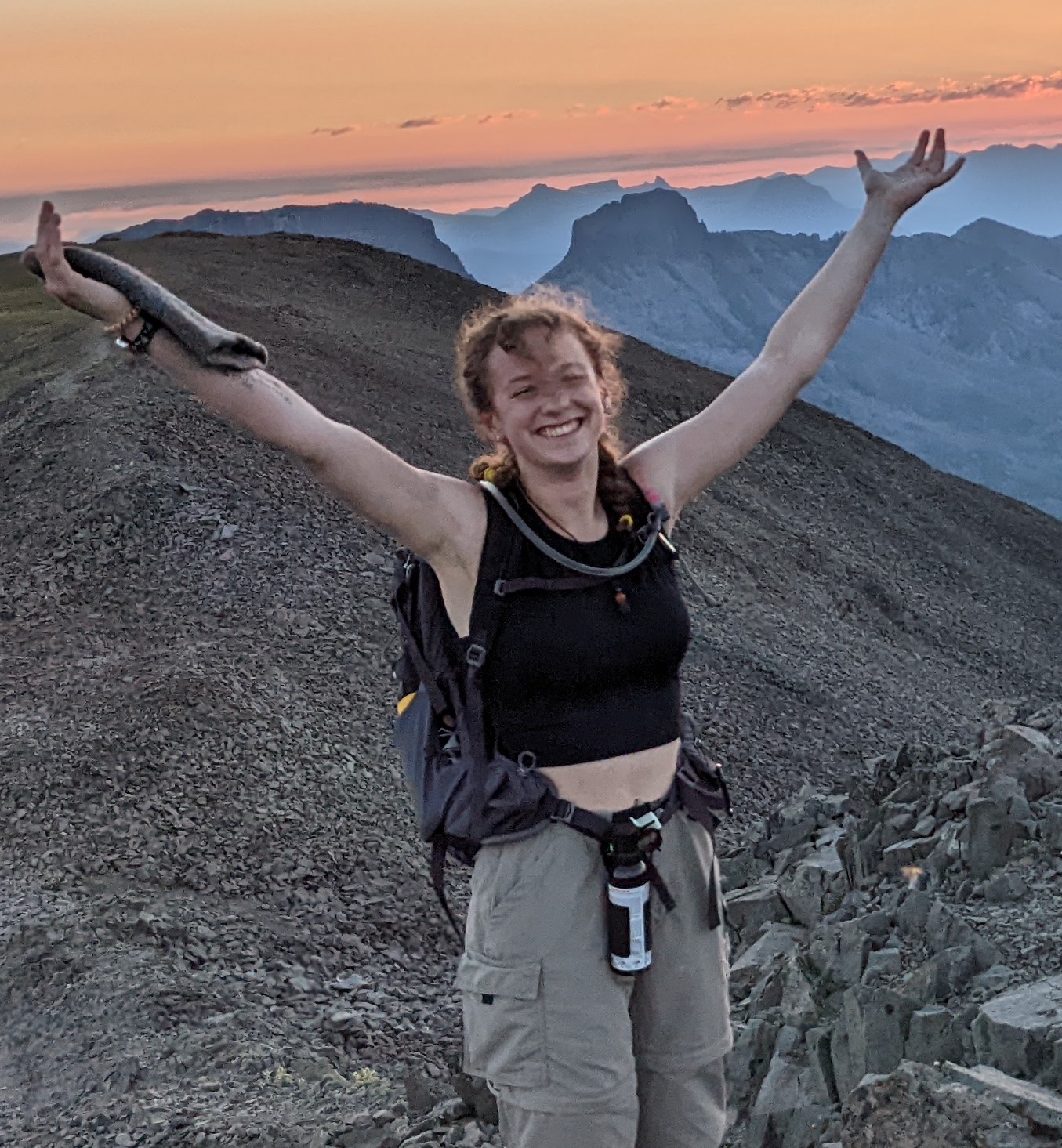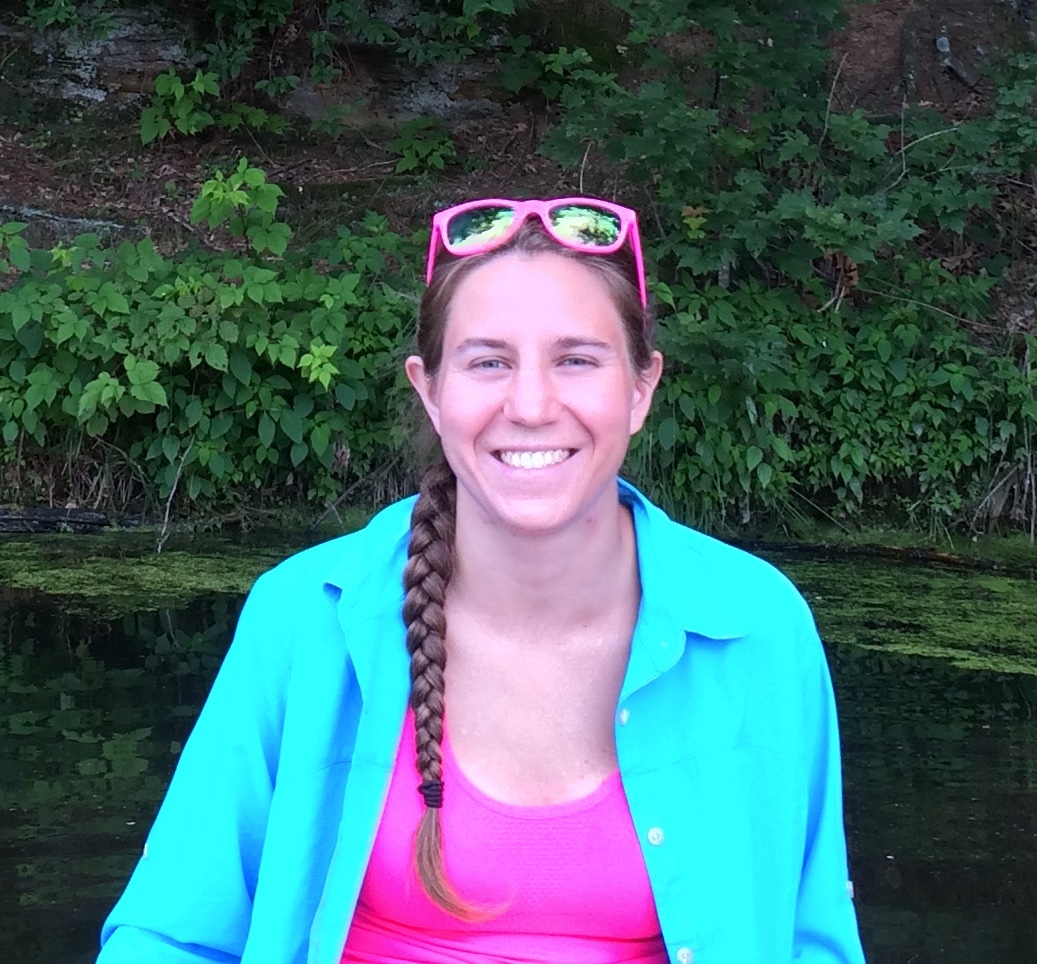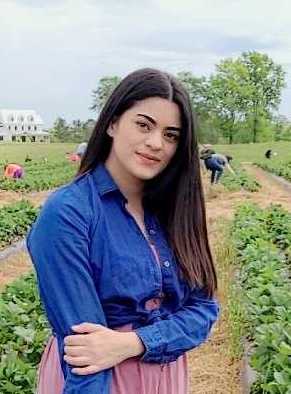Please don't hesitate to email Rachel (rhtoczyd@msu.edu) with questions!
1. What are the native ranges of these plants?
2. What are the common names of these plants?
3. How do I find jewelweed plants?
4. Does the plant need to be in a wild/natural area?
5. How do I know which species it is?
6. What if I am not certain which species it is?
7. Can I collect more than one leaf?
8. What if the leaf I want to collect has holes, spots, blemishes, etc.?
9. When can I mail you leaves?
10. Do I need an iNaturalist account to participate?
11. What if I don't have a smartphone?
1. What are the native ranges of these plants?
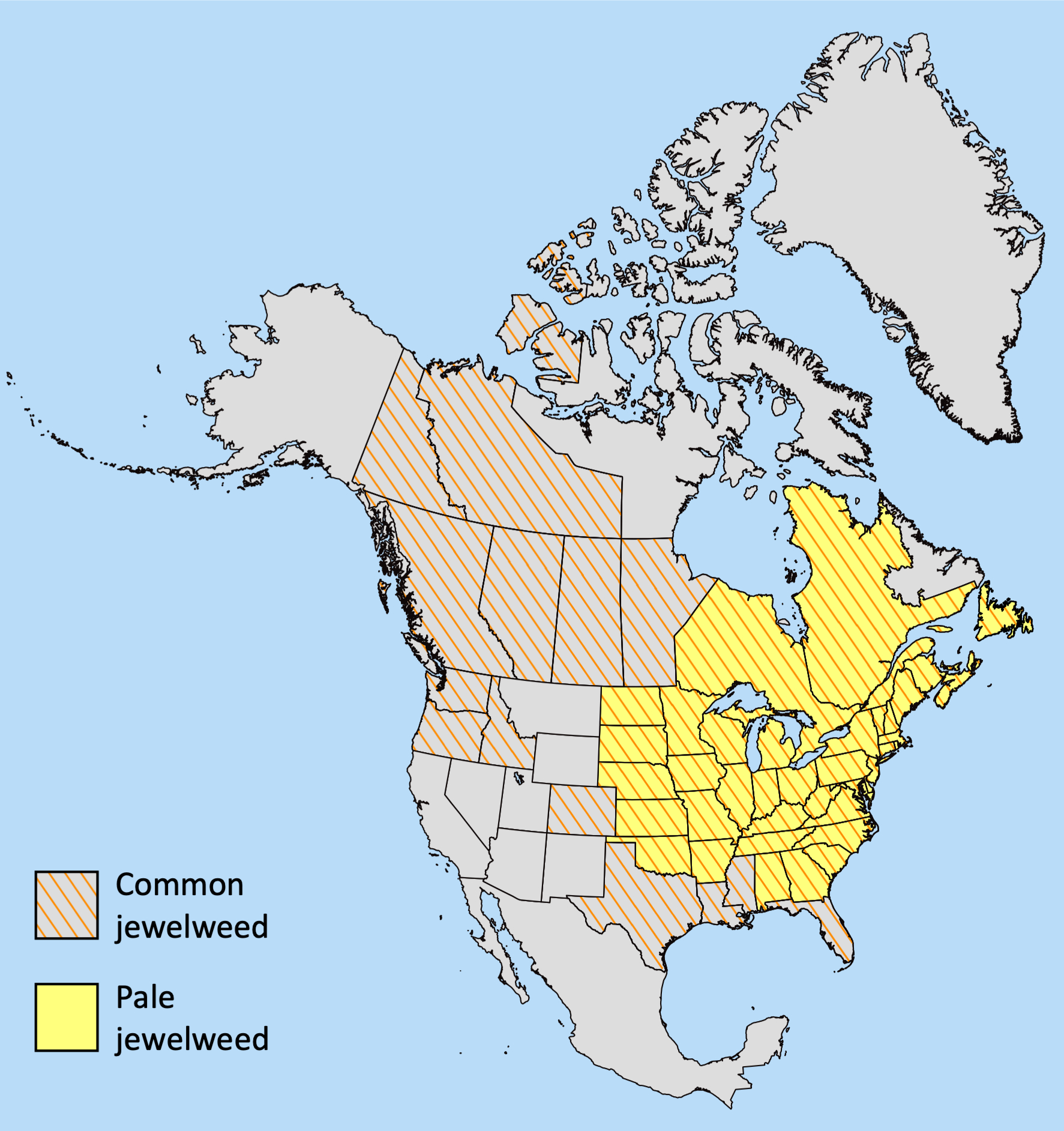
2. What are the common names of these plants?
Impatiens capensis :
Common jewelweed
(Orange) jewelweed
Orange touch-me-not
Spotted touch-me-not
Orange balsam
Impatiens pallida :
Pale jewelweed
Yellow jewelweed
Yellow touch-me-not
Pale touch-me-not
Snapweed
Quick-in-the-hand
3. How do I find jewelweed plants?
Both of these plants are relatively common. They grow in wet, nutrient-rich areas from partial shade to full sun. Some of the spots you might find them include - river banks, drainage ditches, lowlands, lake edges, floodplain forests, marshes, bogs, and wetlands. Yellow or pale jewelweed often grows in drier areas than orange jewelweed - think moist, rich forest soils. If you head to inaturalist.org and zoom in to your geographic area, you may get some hints about where to find these species near you. As noted elsewhere, be sure you have permission to collect a leaf from a plant before doing so! (For example, many nature preserves do not allow people to collect/remove plant tissue without explicit permission).
4. Does the plant need to be in a wild/natural area?
No. Yards, city parks, edges of roads, etc. are all fine as long as it is okay for you to collect a leaf from the plant.
5. How do I know which species it is?
For this project you just need to take your best guess if the species is orange (common) jewelweed (I. capensis), or pale (yellow) jewelweed (I. pallida). Flower color is currently the only reliable way to tell these species apart. Orange jewelweed has orange flowers with varying levels of red spotting. The flowers are also longer than they are wide. Pale jewelweed has yellow or cream flowers with small amounts of reddish-brown spotting. The flowers are about as wide as they are long. For the purposes of this study, as long as you upload a clear photo/s to iNaturalist that shows some leaves and at least one open flower, we will be able to confirm the species identification from the photos.
Bonus fact - the flowers that most people notice on jewelweed are called chasmogamous flowers - because they are generally outcrossed aka pollinated with pollen from another plant. Jewelweed plants make two types of flower though. If you peek underneath the leaves - usually those close to the main stem and/or near the bottom of the plant - you might see what look like very tiny flower buds. These are called cleistogamous flowers. They never open and are therefore obligately self-fertilized. This ensures these annual species can reproduce when light, nutrients, water, and/or pollinators are scarce.
6. What if I am not certain which species it is?
That's okay! Put your best guess into iNaturalist along with at least one clear photo of an open flower. We and the rest of the iNaturalist community will use these photo/s to confirm the identification. If we are also stumped, we will omit this leaf from the analyses. One of the cool things about iNaturalist is that the platform uses the collective knowledge of the community to help correctly identify species in observations that people contribute.
7. Can I collect more than one leaf?
Yes! We always only want one leaf collected per plant (the uppermost fully-expanded, mature leaf on the main stem of the plant). If you do want to collect multiple leaves from one or both species, it would be most helpful to us if these leaves come from geographically (and/or environmentally) distant locations. Having many leaves from the same species of Impatiens that were all collected within a few meters of each other is not super helpful to us. If you do collect leaves from multiple plants, please make sure they each have a unique identification value. For example if iNaturalist user Stephaniej1 collected a leaf from two different Impatiens capensis plants and one I. pallida plant all on August 1st, 2021 and then one I. capensis plant on August 3rd, 2021 she would use the following Unique Leaf IDs:
20210801.Stephaniej1.01
20210801.Stephaniej1.02
20210801.Stephaniej1.03
20210803.Stephaniej1.01
Please start over with value .01 on different days.
Please also remember to keep each leaf correctly matched to the iNaturalist record (e.g. the leaf in the cardboard labeled 20210801.Stephaniej1.01 should be matched to the data Stephanie uploaded to iNaturalist with ID value 20210801.Stephaniej1.01).
8. What if the leaf I want to collect has holes, spots, blemishes, etc.?
This is okay as long as the leaf margin (aka edge) is not damaged. We will be using a flatbed scanner and code to digitally trace the outline of each leaf. The interior of the leaf is not as important for our analyses (we may use it to do some color analyses).
9. When can I mail you leaves?
You can collect and mail us a leaf or leaves at any point in the summer/fall of 2022 as long as each plant you collect from has at least one open flower (so we can confirm the species) and the uppermost fully expanded leaf on the main stem has an undamaged, complete edge (so we can generate an outline of the entire leaf).
10. Do I need an iNaturalist account to participate?
Yes. But, setting one up takes less than five minutes and only requires an email address. Having an account also allows you to contribute to other research projects, see what plants and critters people are spotting in your area, and keep track of your own cool encounters if you are interested.
11. What if I don't have a smartphone?
You are still more than welcome to participate. You will just have to do a little additional work to take a photo/s of the plant that you collect a leaf from and upload these photos and associated information to iNaturalist. You may also need to do a little more hands-on work to keep track of the date and the location (latitude and longitude) that you collected the leaf from.
You can use any digital camera to take the photo/s of the plant that you collected the leaf from. You will need to make sure you have the date that you collected the leaf recorded somewhere to input into iNaturalist. You will also need to manually input the latitude and longitude of the plant that you collected the leaf from. (We would like the coordinates to be accurate within a few miles or less). To find the latitude and longitude of a place using Google Maps (e.g. on a home computer) - open Google Maps, find and zoom in to the approximate location on the map, and click on the specific location on the map where you collected the leaf from. This will pop up a little window with the place name or address and the latitude and longitude for the specific location that you clicked on the map.


